Sapien Loop and Our Own World – Part One: Cycles and Loops
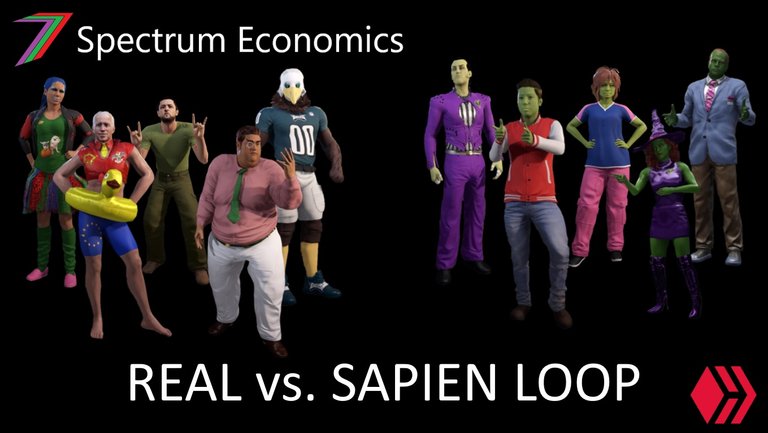
My motivation for writing the Sapien Loop series of books and stories is the current state of our world. Western civilisation is on the verge of collapse. It is plagued with crises after crises. These include the health crises (physical and mental), population crisis, housing crisis, public infrastructure crisis, financial and economic crises, cultural divergence crisis, and social and economic inequality crises. Leadership and governance are heading towards centralisation and authoritarianism. Political structures more closely resemble corporatocracy or plutocratic socialism.
The Sapien Loop series of books and short stories were written as an imperfect reflection of our own reality. The structure of society is simplified and transparent, but also broad. Instead of a world made up of hundreds of different countries, the story is based in a single country on a planet with just one continent. To make such a simplification, the books and stories could not be based on Earth. Instead, I created a planet I called Sapia and a country/continent called Sapey.
I simplified the number of species on the planet to just five. Three species are introduced from the beginning. These are the Sapiens, Sapiods, and Sapes. Two more species are introduced later in the first book. These are the Linap and Sentray. The five different species are also a species type. Each plays a role somewhat similar to the species in our own world.
A key advantage of using a different planet and different civilisations is that it does not need to be technically accurate. There is no need to debate facts or definitions as we are moving through a fictional story in a fictional world. The books and stories can stand on the ideas and theories of what our world could have been, is, and might be. No particular race, culture, or country is targeted through this method of storytelling and reflection.
Resemblance to Reality
In this series of posts, I will explain the connection between the Sapien Loop world and our own. The Sapien Loop books and stories cover many different themes. It does so in a way that would not be possible outside of a fictitious world. These themes relate to social order, politics, governance, banking, business, religion, media, entertainment, family, technology, the environment, and many more.
Sapien Loop and Civilisation and Social Cycle Theories

Source: Image created by Bing Image Creator
The idea that the world runs in cycles is the backbone of the Sapien Loop books and stories. The opening chapter of ‘End of an Era’ describes basic and obvious cycles such as days and years. These are obvious because we experience them on a regular basis.
The story continues by adding that some cycles last much longer. For example, the business cycle. It begins with the end of a lull, which leads to rapid growth; eventually this reaches the peak and finally the decline, which leads to another lull. Evidence suggests that business cycles run for roughly seven years. These cycles do not follow identical patterns, but they are similar. They are less precise than the much shorter cycles.
The longer the cycle, the less obvious it is and the harder it is to detect.
Sapien Loop considers the much longer cycles of empires and civilisations. Empires rise and fall over periods of hundreds of years. While experienced, these long cycles are difficult to understand and predict. However, they are much easier to observe in hindsight. Hence, they are acknowledged as cycles.
Global forecaster David Murrin, has studied the rise and fall of empires. He has been able to establish consistent patterns in the form of cycles. He breaks a cycle down into five phases. These are:
- Regionalisation
- Ascension
- Maturity
- Overextension
- Decline and legacy
The rise and fall of both the Roman and British empires fit this basic model. Murrin also discusses what he calls the Western Christian Super Empire (WCSE) and the Asian Super Empire (ASE). He essentially divides the world into two civilisations.
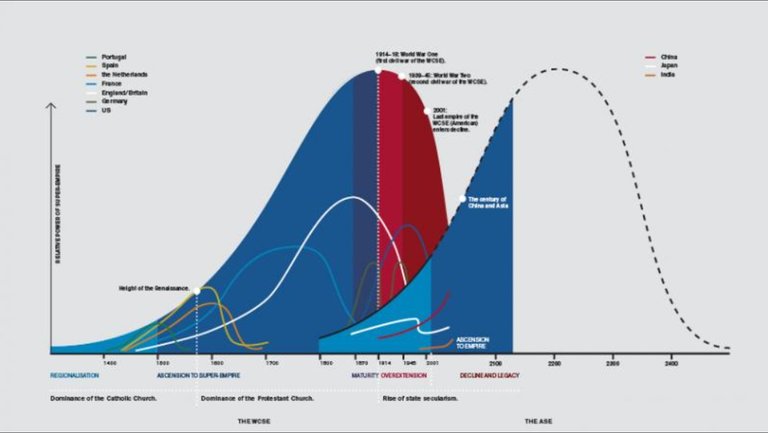
He estimates that the WCSE is in its final stages of decline and that the ASE is in its ascension phase. The cycles he briefly outlines align with the decline in the West that was predicted around a decade ago by the deagel.com website, which I discuss in my post Global Collapse – Part 1: Deagel Predictions.
The progression of empires most likely plays a role in the even larger cycle of entire civilisations. The fall of significant empires such as the Roman Empire led to the stagnation of much of the world that it formally dominated. This period was informally referred to as the dark ages. We could argue that this was a significant transition period in the larger cycle of our civilisation, but not necessarily the end of it.
The rise and fall of entire civilisations would occur over thousands or even tens of thousands of years. These cycles are far more difficult to identify. They occur over such a long timeframe that they are difficult to conceive as one giant cycle. There is also the problem of the discontinuation of information as populations are wiped out at the termination of the civilisation. Evidence of the existence of previous civilisations is scattered. Thus making it difficult to defend their existence.
The Establishment would prefer that the general population were unaware of such previous advanced civilisations. If people understood why these previous advanced civilisations fell, they might see our current civilisation in a different light. This knowledge poses a threat to our existing establishments.
Mainstream archaeologists have made an effort to discredit theorists who attempt to prove the existence of advanced ancient civilisations. For example, writer, journalist and theorist Graham Hancock, has conducted extensive research into possible past civilisations. His work is often met with ridicule, and some theories have even been claimed to be linked to racism and white supremacy.
Such tactics are used to prevent constructive and open debate. This is typically done for two reasons. First reason: an argument is too strong to be sufficiently defeated using facts and evidence. Second reason: it is to create a difficult-to-resolve divide between two factions of people.
Religion often holds hidden truths that are discarded as fables. Ancient religious scripture suggests the existence of advanced ancient civilisations. For example, the Bible and the Torah refer to a time known as the Antediluvian. They describe advanced civilisations that existed before being wiped out by the great flood. The Quran mentions the advanced ancient civilisation of Thamud. It claims God destroyed the civilisation for rejecting the words of the Prophet Salih.
Cycles in Sapien Loop
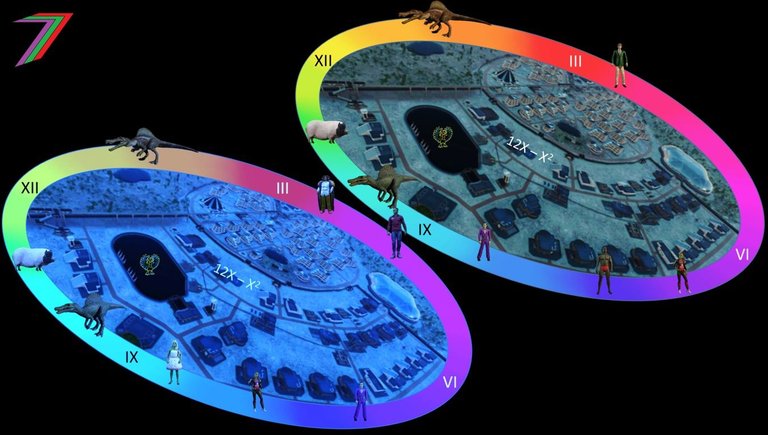
Sapien Loop is based in the twelfth cycle of civilisation on Sapia. The beginning of the loop is described briefly by Governor Lily in ‘End of an Era’ and in more detail in the short story ‘The Twelfth Loop Begins’. The twelfth cycle appeared to end at the end of ‘End of an Era’.
The twelfth cycle resembles the two-part rise and fall of the Linap civilisation. We could divide them into the ancient civilisation and the modern civilisation. The twelfth loop began with conflict between the two dominant species. One species was the Sentray. They were huge, powerful predators. They were incredibly durable and had the ability to rapidly heal when injured. The other was the Linap. They were highly intelligent and had evolved an advanced ability to blend into their surroundings to avoid detection by the Sentray. The two species evolved in competition with each other.
The Sentray were winning this battle. However, the few remaining Linap had developed the ability to become invisible, and most could even shapeshift. Thus making them extremely difficult to wipe out entirely.
As described in the short story, ‘The Twelfth Loop Begins’. The Linap were able to fight back against the Sentray when they discovered a combination of algae and pollen that was poisonous to them. Over several hundred years, the Linap were able to fully turn the tables on the Sentray and forced them out into the vast ocean. Thus leaving themselves as the dominant species.
The Linap used their dominance to grow and flourish. Their populations and settlements grew rapidly and large. They used their intelligence to develop technology that further increased their dominance as a species. The improvements in technology also helped to vastly improve the Linap’s standard of living.
Most advancements came from a small minority of highly intelligent Linap. They became incredibly wealthy from creating these advancements. Despite enjoying these advancements, some Linap became jealous of the wealth this minority had acquired. This turned to anger when they discovered the true reasons for this success. A secret serum had been developed by a genius Linap to increase the intelligence of his family.
The majority of the Linap felt they were at an unfair disadvantage and wanted to even the playing field. The serum was seized from the intelligent minority and then mass-produced for all the Linap. However, this led to complete disaster. The serum had disastrous health impacts on the second generation. This health crisis threatened to wipe out the entire Linap species.
Resources devoted to caring for the sick and their rapidly declining population led to the rapid collapse of the Linap civilisation. This is briefly explained in ‘End of an Era’ and greatly elaborated in ‘Frozen in Time’.
To survive, the Linap species decided to create a new species using predominantly their own genetics but mixed with that of a particular type of Sape (an animal species very similar to pigs in our world). This species was called the Sapiens. The Linap remained the ruling species, and the Sapiens were, unknowingly, the subordinate species. This was possible because of the Linap’s shapeshifting abilities, which had been bred out of the Sapiens and the clever system they had developed.
To the benefit of the Linap, the Sapien species flourished, and a new and even more successful civilisation emerged from the old. However, this arrangement was not satisfactory to certain Linap. They believed the concessions they gave were too high to maintain their secret.
A wealthy Linap scientist discovered Sentray eggs in the great ocean. He and his team discovered a way to extract the healing properties from the Sentray’s genetics and apply them to their own genetics. With the promise of renewed health, the dissatisfied Linap decided to eliminate the Sapiens. Just like how they defeated the Sentray, they planned to do so by contaminating the Sapiens water supply.
This attempt completely backfired. A hybrid Linap-Sapien found out about the plan. He used the screams from a captured hatched infant Sentray to lure the Sentray back to the mainland. After centuries of living in the ocean, the Sentray had renewed their numbers and had recovered from the damage caused by the poisoning.
The Sentray went on a rampage and destroyed the Capital Region, the home to the majority of the Linap. However, they did not stop there. They went on to destroy the regions predominantly inhabited by the Sapiens. They kept going until only one region remained. At this point, it appeared the weaker genetically modified Linap had been completely wiped out. Thus, completing the cycle. The cycle ended as it had begun with a confrontation between the Linap and Sentray. However, this time the Sentray won. This is explained in detail in ‘End of an Era’.
In the epilogue of ‘End of an Era’, it is revealed that a species had been frozen in cryogenic chambers. In the main story of ‘Frozen in Time’, it is explained that the frozen species is the pre-modified Linap. Not all Linap agreed for their children to be genetically modified. When the genetically modified Linap realised the extent of their ailments, the unmodified Linap became a huge threat.
The unmodified Linap faced persecution, enslavement, and even death. To avoid this, they managed to hide in an underground network made by civilisations from previous loops. The leaders of the group decided to freeze themselves until the modified Linap had succumbed to their genetic illnesses. At the time, it was thought that this would not take long. However, the genetically modified Linap found a way to survive.
It was only after the destruction of the genetically modified Linap by the re-emergence of the Sentray that the unmodified Linap returned to the surface. A thousand years underground had changed them; they had lost their colouring and were vulnerable to the sunlight. They wanted to return to the surface, but they needed help to re-establish themselves.
One of the frozen Linap had a treatment, which he claimed was a cure, to help the Sapiens who had fallen ill from the contaminated water. In exchange, the Sapiens would help the underground Linap build their settlements above ground. The Linap moved into the Sapiens’ last remaining region as the Sapiens travelled both east and west to build the new settlements. Within a very short time, the Linap had taken control of the only remaining region. In context to our world, this is similar to the ongoing replacement of the indigenous Europeans.
It appears that the next loop has begun. This story is to be told in the final instalment of the series, ‘Worlds Collide’.
Unpacking the Story
The above description covers the progress of the cycle and is a very broad outline of the Sapien Loop story and universe. In the upcoming posts, I will break down some of the main elements of the story as well as why I progressed it in a particular way. I will explore in detail the similarities between the fictitious Sapien Loop world and that of our own. I will discuss the past, present, and possible future that we are moving towards.
The Sapien Loop Series

I am writing a trilogy of books titled Sapien Loop. The first in the series is Sapien Loop: End of an Era and the second is Sapien Loop: Frozen in Time. I published both of these books as ebooks on Amazon, and I have posted completed chapters to my @captainhive account. I anticipate publishing the third book in early 2027. I expect to title this book Sapien Loop: Worlds Collide. In 2025, I plan to write short stories about some of the characters and their adventures. I will post these to my @captainhive over the course of the year.
Brief Summary of Sapien Loop: End of an Era
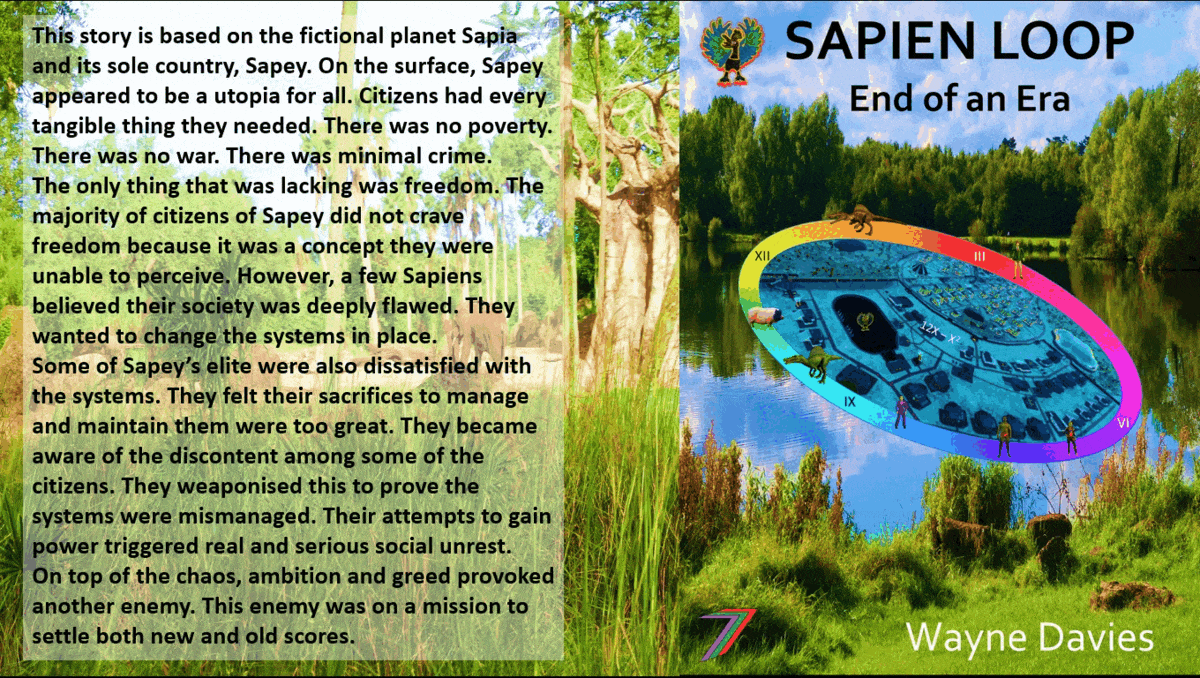
This story is based on the fictional planet Sapia and its sole country, Sapey. Sapey is portrayed as a form of utopia for all its citizens. No poverty. No war. Almost no crime. Opportunities for all.
This was enough for most citizens, but not all. In one of the small regions, some of the citizens had become discontent. They felt something important was missing in their lives. Their discontent did not go unnoticed. Some of the Sapey elite wanted to weaponise this discontent to gain more power. This created more chaos than they anticipated. This led to further widespread social unrest.
On top of the chaos, ambition and greed provoked another enemy. This enemy was on a mission to settle both new and old scores.
Brief Summary of Sapien Loop: Frozen in Time
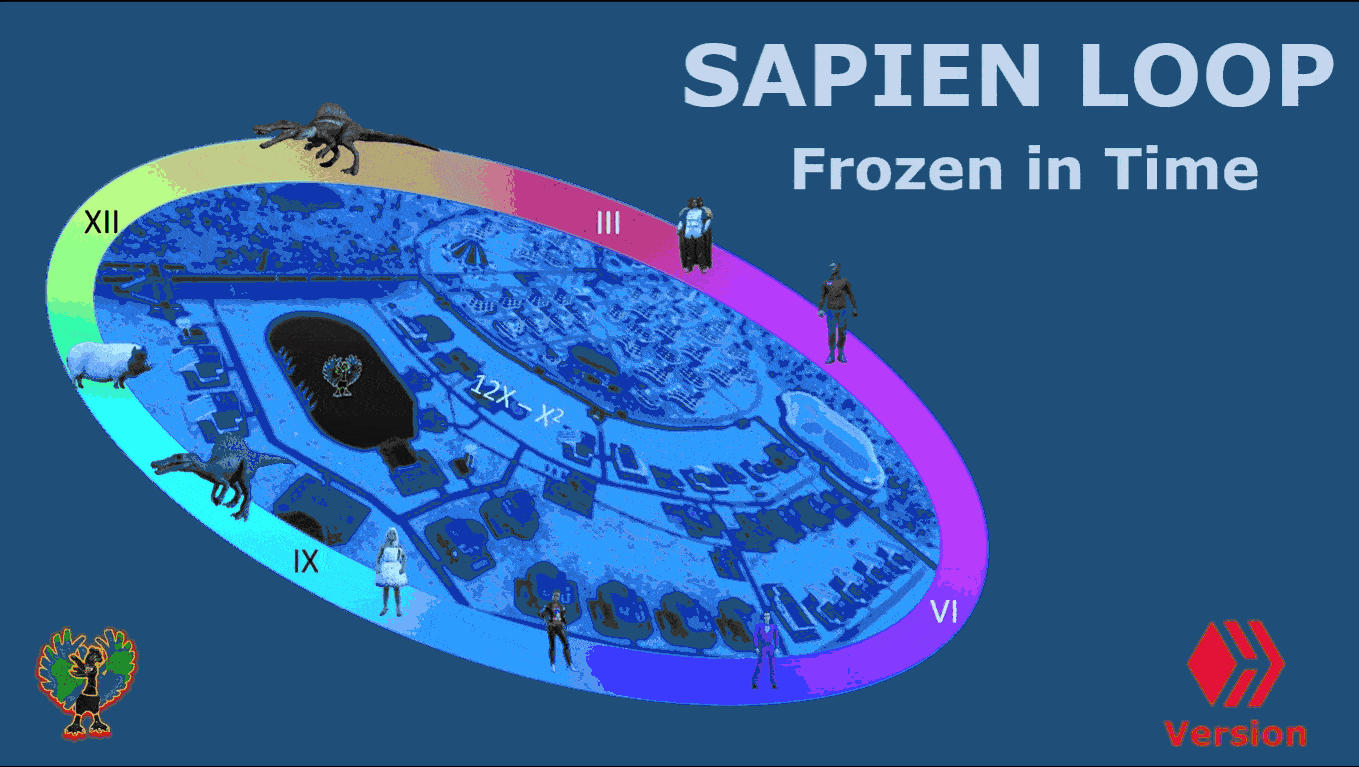
This story is based six years after the original story. The Downs Region is still suffering from a serious health crisis caused by the contaminated water. The main characters are desperately trying to find a cure for the illness that has been caused by the water.
One of the main characters has discovered frozen humanoids in hidden chambers. It appears they have been frozen for a long time. These chambers connect to a vast network of tunnels. While exploring the tunnels, one of the frozen humanoids disappears. It appears he has been stolen.
The story takes a step back in time to tell the story of the frozen humanoids. How and why were they frozen? This part of the story also explains the fall of ancient Sapey and the birth of the Sapiens. Can those from the past be able to coexist with those from the present?
Hive: Future of Social Media
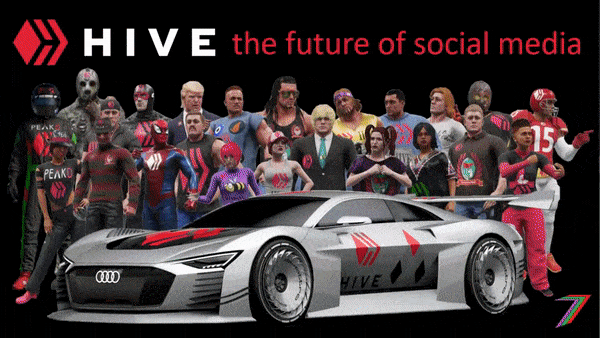
Spectrumecons on the Hive Blockchain

This post has been manually curated by @steemflow from Indiaunited community. Join us on our Discord Server.
Do you know that you can earn a passive income by delegating to @indiaunited. We share more than 100 % of the curation rewards with the delegators in the form of IUC tokens. HP delegators and IUC token holders also get upto 20% additional vote weight.
Here are some handy links for delegations: 100HP, 250HP, 500HP, 1000HP.
100% of the rewards from this comment goes to the curator for their manual curation efforts. Please encourage the curator @steemflow by upvoting this comment and support the community by voting the posts made by @indiaunited.
https://x.com/jewellery_all/status/1916223348302090417
#hive